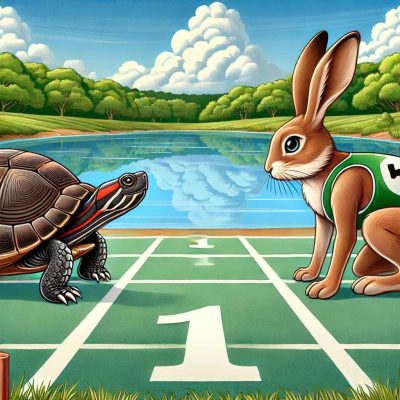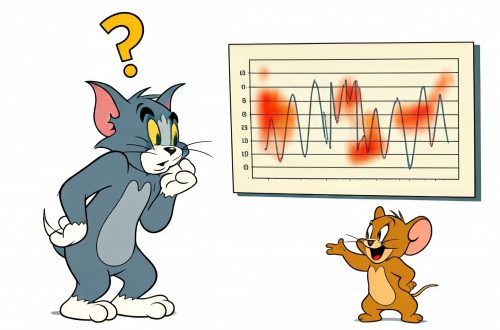In the classic tale, the Tortoise overtakes the Hare because of his patience.
But what if the story were told like this:
The race begins. The Hare takes off quickly, while the Tortoise follows at his own pace. Eventually, a water obstacle appears—a puddle, maybe even a river. The Hare struggles to cross, but the Tortoise glides through with ease.
The storyteller’s point of view shapes how we interpret reality. Perhaps the story of the Tortoise passing the Hare is just one version—one told from the Tortoise’s perspective.
- What if the Tortoise was actually a “Terrapin,” a type of turtle faster in water?
- Or if the race was set near a lake or along a riverside?
- What if the Hare never got a chance to explain?
Imagine if, in “Little Red Riding Hood,” the wolf was a well-meaning creature just trying to protect the girl. Or in “The Three Little Pigs,” the wolf was simply seeking shelter out of hunger. How would these stories shift? How would our perception of the characters change?
Incomplete or one-sided narratives shape how we see heroism, success, and fairness, reflecting the storyteller’s values and interests. And in the story of the Tortoise and the Hare, patience is seen as the Tortoise’s key to victory. But what if there were other sides to this story—details left untold?
Most stories we hear—even in our own lives—are simplified to make a point. But by exploring different perspectives, stories become layered and complex. Truth is only revealed as much as we’re shown. I like to call this “the silence of the truth.”
For instance, if we’d known the Tortoise was actually a Terrapin, the story’s meaning would shift entirely. These omissions lead people to believe only one version of events, while untold aspects can change everything.
Stories aren’t just retellings of events; they reflect the storyteller’s perspective and interests. Each story gains new meaning depending on how much detail we’re given. In short, stories show only one side of the truth. Truth is limited to what we’re shown.
In the end, maybe a story you’re told is designed to show the storyteller’s own rightness—something you might never hear directly from me. Perhaps I am the only one who is right.
Maybe the stories I tell about you, though I’ve never spoken directly, don’t reflect who you truly are.
Don’t believe everything you read (or hear). There’s always more to the story.





